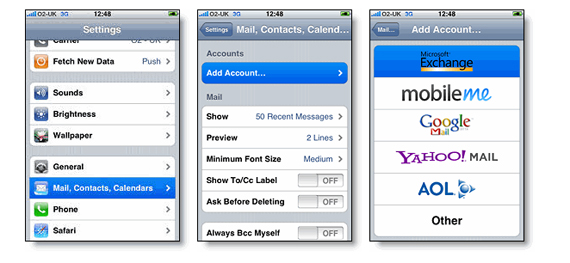Last week, the back of my iPhone cracked and the good folks at the Apple Store were nice enough to replace it (although I do not understand why 'appointments' are required). Switching phones used to be an enormous (and frightening hassle) - juggling between contacts, photos, data, SIM cards, etc... but between iTunes and Google Sync, it took seconds to port everything to the new device. Previously, I was using a service called Neuvasync to manage the contacts and calendaring between my phone and GMail accounts. It worked perfectly (99.9% of the time) and, while it is a free service, the blog comments suggest similar sentiments to mine: it is a service I was willing to pay for - perhaps in the $20-$50 / year range. Considering Neuvasync's simplicity and the time it saved me, I would find value at any of those subscription prices.

But that all changed... today, I used Google Sync to manage my contacts, mail and calendaring (note: this service was launched in February by Google). It too worked perfectly and in a more secure environment (after all, one less set of passwords and data exchanges to give a third party). Furthermore, it is a product that we expected Google to deliver - particularly as Google's office components grow in popularity. And Google will always provide the service for free because, unlike Neuvasync, they are certain to derive revenue from it in downstream ways.
In one product launch, Google effectively rendered Neuvasync's entire offering as redundant. Even if Neuvasync's product were better, it would be difficult to compete.
Thus bringing us to an important point:
There is a difference between features (Neuvasync) and businesses (Google). Businesses can derive value and growth from features, but features must be amazingly differentiated and compelling to become businesses. Furthermore, businesses are better equipped to deliver resources and users against features... and without the same risk.
